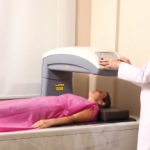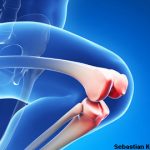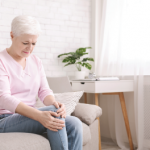(Reuters Health)—People with stiff and aching knees due to arthritis get better relief from physical therapy than from cortisone injections, according to a one-year military study comparing the two treatments. A multi-disciplinary team of doctors reports in The New England Journal of Medicine that people who initially scored 107 on a 241-point scale measuring a…

Premenopausal Osteoporosis Poses Special Clinical Challenges
ATLANTA—Osteoporosis in premenopausal women is uncommon compared with its frequency in post-menopausal women, but when it is suspected, it poses some difficult questions for clinicians: How should it be diagnosed in this understudied population? If found, should it be treated—and how? Elizabeth Shane, MD, professor of medicine at Columbia University and attending physician at New…

Study Finds an Indirect Association Between Sleep & Inflammation
In a study in Arthritis Care & Research, researchers showed an indirect association between osteoarthritis (OA) and sleep health in older men.1 In those participants with OA, the condition is associated with poorer sleep health, as well as a 16% higher incidence of elevated C-reactive protein and 12% higher odds of having elevated interleukin 6….
Denosumab Tied to Infection Risk
NEW YORK (Reuters Health)—The osteoporosis drug denosumab is associated with a higher incidence of serious infections compared with placebo, but the risk is similar to comparator drugs, a systematic review and meta-analysis reveals. Talia Diker-Cohen, MD, PhD, of Tel Aviv University, and colleagues searched the literature through May 2019 for randomized controlled trials of denosumab…
Tears of Knee Ligaments & Meniscus Carry Highest Arthritis Risk
(Reuters Health)—Young adults who have had knee injuries are much more likely than uninjured peers to develop knee osteoarthritis (OA) by middle age, especially if they have broken bones or torn connective tissue, a recent study suggests. Cruciate ligament injuries were associated with a 19.6% greater risk of knee osteoarthritis, the study found. Meniscal tears…

Beyond Drugs: ACR/AF Guideline Update for Hand, Knee & Hip OA Emphasizes Exercise
Guideline authors discussed therapeutic options for patients with hand, knee and hip OA in a session at the 2019 ACR/ARP Annual Meeting.

Year in Review: Rheumatic Disease Research in 2019
ATLANTA—Encouraging data on interleukin (IL) 23/IL-17 pathway drugs in psoriatic arthritis (PsA), JAK inhibitors in rheumatoid arthritis (RA) treatment and new evidence on physical activity and bone health in women were among the highlights of the 2019 ACR/ARP Annual Meeting’s Clinical Year in Review. Susan Manzi, MD, MPH, director of the Lupus Center for Excellence…

Management of Meniscal Tears: Surgery May Not Be Necessary
Patients with meniscal tear experience similar levels of reduced pain and improved physical function when treated with either arthroscopic partial meniscectomy or physical therapy, according to a recent study. The study also found these improvements were long term—lasting through the five-year follow up…

Study Examines How Depression Subtypes May Stem from Osteoarthritis
People with or at risk for symptomatic knee osteoarthritis (OA) may be assigned to four depression subtypes with distinct clusters of depressive symptoms that may affect pain and disability over time, according to a new study in Arthritis Care & Research.1 Four depression subtypes were identified in the study using the Center for Epidemiologic Studies…
What Causes Knee, Hip & Hand Osteoarthritis
Funck-Brentano et al. hypothesized that causal associations for osteoarthritis (OA) may differ by site, and they undertook this study to identify causal risk factors of knee, hip and hand OA.
- « Previous Page
- 1
- …
- 7
- 8
- 9
- 10
- 11
- …
- 46
- Next Page »